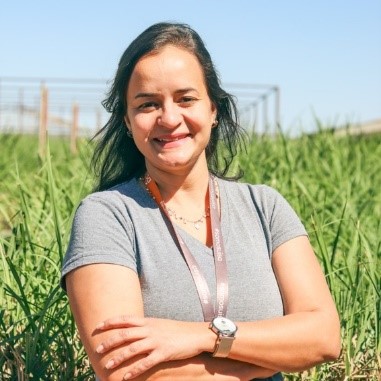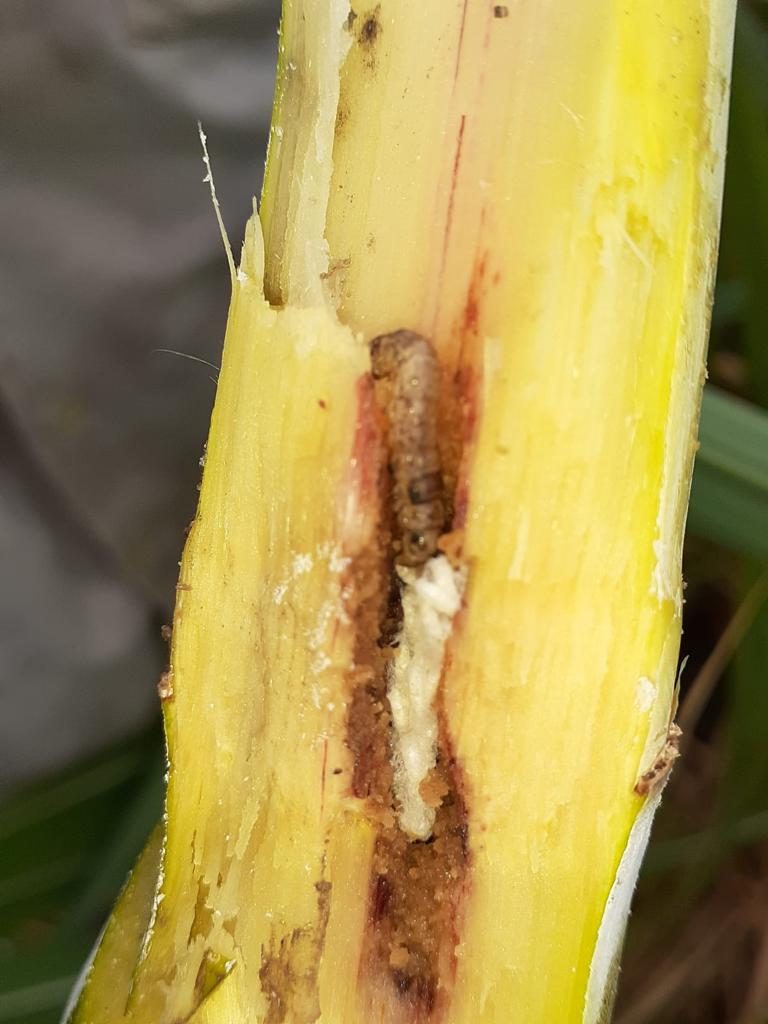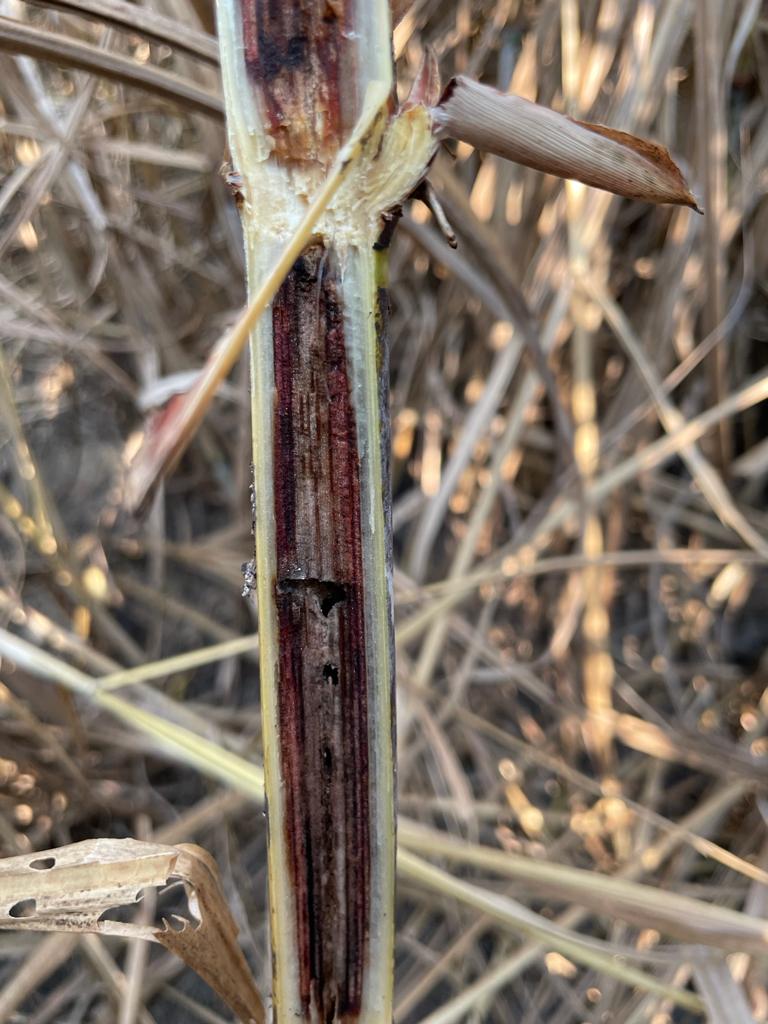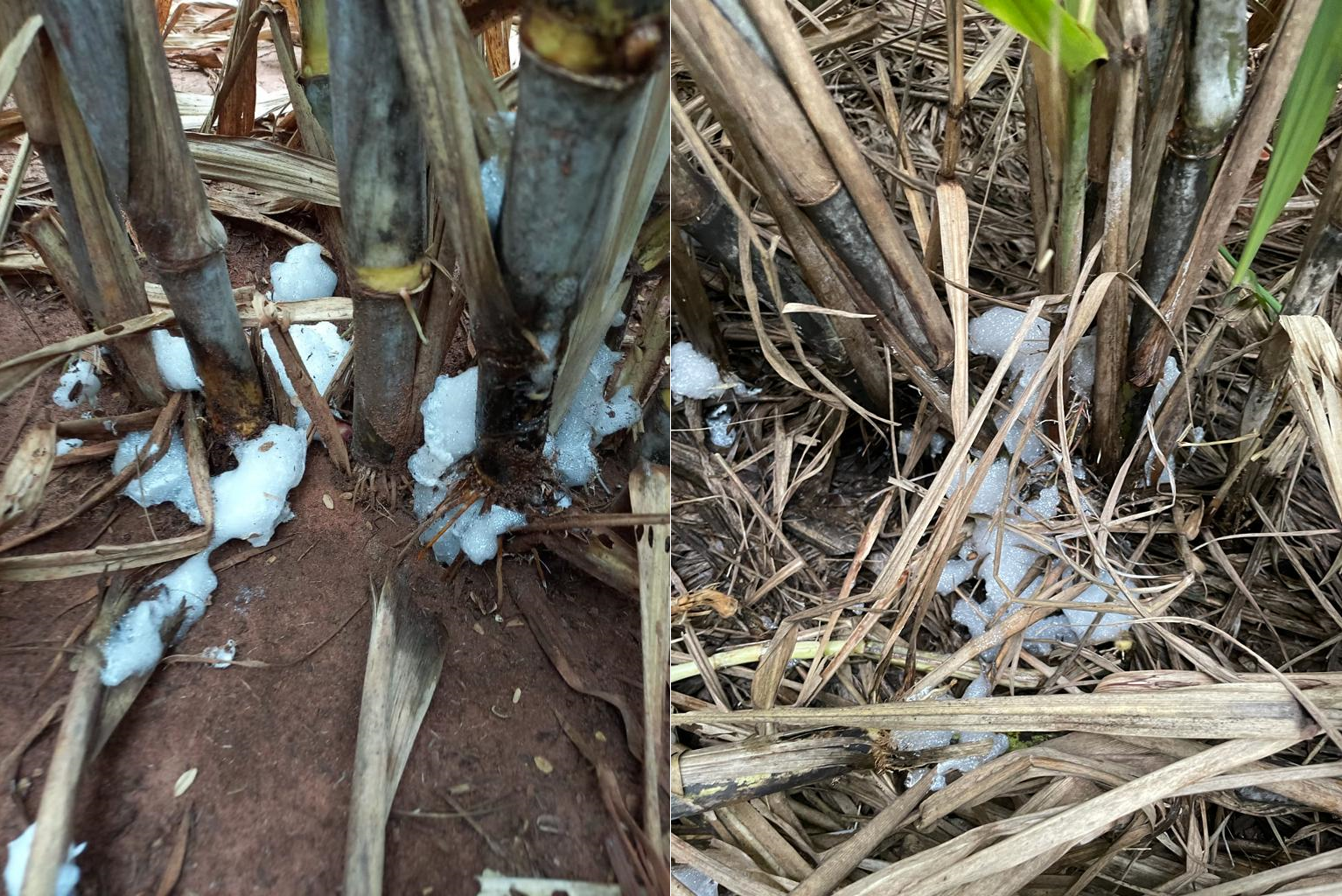“O histórico climático da região produtora deve ser o pilar para a elaboração do programa de controle.”
Gabriela Vieira Silva é bióloga pela Universidade Estadual do Norte do Paraná, engenheira agrônoma pelo Centro Universitário Filadélfia, mestre em entomologia pela Universidade Federal do Paraná, e doutora em fitossanidade pela Universidade Estadual de Londrina em parceria com a Embrapa Soja.
Silva é sócia-fundadora da Empresa Agribela – Pesquisa e Desenvolvimento de Tecnologias Biológicas, gerente do Centro Biotecnológico da Biomassa e professora no Programa de Mestrado em Agronomia da Universidade Estadual do Norte do Paraná.

Gabriela Vieira Silva, sócia-fundadora da Agribela.
Bilhões de reais são perdidos, anualmente, em decorrência do ataque de insetos que se alimentam da cana. Seja na raiz, no colmo, ou nas folhas, o complexo de pragas dessa cultura é dinâmico e não tem tempo para “brincadeiras”. Então, qual a receita para evitar tamanho prejuízo?
Antes da resposta, vale ressaltar alguns pontos. O complexo de pragas da cana de açúcar é composto, principalmente, por espécies das ordens Lepidoptera, Coleoptera, Hemiptera, Hymenoptera e Isoptera; exemplificando, broca da cana, bicudo, cigarrinha, formigas cortadeiras e cupins, respectivamente. Cada um desses insetos possui características biológicas e de comportamento marcantes, mas há uma similaridade entre eles: todos ocorrem quando as condições, bióticas e abióticas, são propícias. Parece óbvio, mas parte daqui o manejo para driblar os danos que eles podem causar.
O histórico climático da região produtora deve ser o pilar para a elaboração do programa de controle. Os insetos são reativos a variáveis temporais, especialmente temperatura e umidade. O trio broca-cigarrinha-bicudo, por exemplo, apresenta picos populacionais em períodos onde os índices pluviométricos são maiores, embora ocorram o ano todo. Assim, os esforços de amostragem e monitoramento devem ser intensificados nessas épocas.
Apesar de não haver níveis de controle estabelecidos para todas as pragas, na cana-de-açúcar a literatura e experiência do setor dão a segurança sobre qual é o melhor momento de agir para as principais espécies que ocorrem. Os níveis de ação, indicados pelo número de indivíduos/área ou pelo percentual de injúrias/área, devem ser criteriosamente seguidos, a fim de que os resultados obtidos sejam os mais eficazes, evitando-se desperdícios e retardando a ocorrência de populações resistentes.
Como ferramentas, dentro do manejo integrado de pragas (MIP) da cana, temos os inseticidas, químicos ou biológicos. Embora não seja a cultura mais representativa em área (são aproximadamente 8,5 milhões de hectares no Brasil), é uma das mais expressivas em diversidade de produtos. Se olharmos para as possibilidades biológicas, temos vespas parasitoides (Cotesia flavipes, Trichogramma galloi e Tetrastichus howardii), fungos entomopatogênicos (Metarhizium anisopliae e Beauveria bassiana) e bactérias (Bacillus thuringiensis) sendo utilizados em grandes áreas. Além disso, os inseticidas químicos, cada vez mais seletivos e menos agressivos ao ambiente, também estão disponíveis para todas as pragas.Em posse dos melhores produtos, é indispensável a melhor tecnologia de aplicação. Para os produtos químicos, deve-se priorizar aplicação terrestre, com bicos e pontas adequados, assim como vazão, respeitando as doses recomendadas.
Para os microbiológicos, deve-se fazer o mesmo: seguir as doses recomendadas, produzir a calda da forma correta, aplicar com as condições adequadas.
Sobre os macrobiológicos (vespas), deve-se ter atenção especial sobre a qualidade do produto, o tempo de prateleira e condições de aplicação. Hoje, a tecnologia de liberação desses organismos avançou muito, o que proporciona alta eficiência.
Dentro das ferramentas, não podem ser esquecidas as variedades de cana. Sabe-se que cada uma tem suas peculiaridades, como a susceptibilidade ou não a determinadas pragas, além das variedades transgênicas. A escolha do local correto, com base no histórico de ocorrência da praga e características edafoclimáticas, é condição indispensável para o manejo.
Ressaltados estes pontos, vamos a resposta para a pergunta inicial: não há receita pronta! O manejo integrado de pragas é um conceito abrangente e apresenta as premissas para o sucesso do canavial. Cabe aos responsáveis o entendimento da biologia e comportamento das espécies, o acesso as melhores ferramentas e, especialmente, a tomada de decisão/ação no momento correto. Assim é possível o encaixe perfeito das peças do quebra-cabeça do MIP e o sucesso na condução do canavial.
Exemplos de ataques de praga na cultura da cana-de-açúcar

Foto 1: Lagarta de Diatraea saccharalis, a broca da cana, parasitada por Cotesia flavipes.

Foto 2: Orifício feito pela broca no colmo da planta.

Foto 3: Colmo atacado pela broca

Fotos 4 e 5: ataque de Mahanarva sp. As espumas são produzidas pelas ninfas da cigarrinha.
LEIA MAIS:

